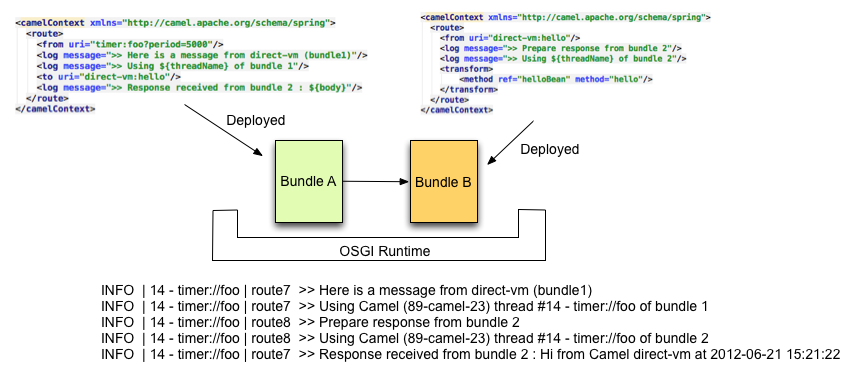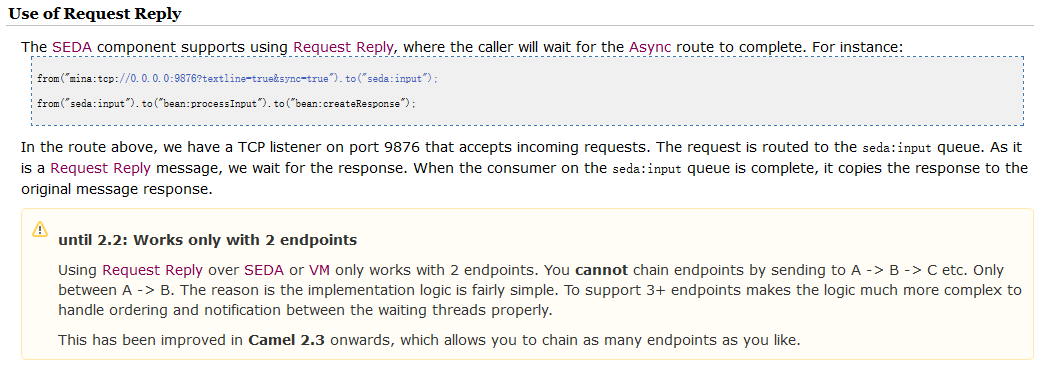Direct Component
The direct: component provides direct, synchronous invocation of any consumers when a producer sends a message exchange.
This endpoint can be used to connect existing routes in the same camel context.
Direct VM Component
Available as of Camel 2.10
The direct-vm: component provides direct, synchronous invocation of any consumers in the JVM when a producer sends a message exchange.
This endpoint can be used to connect existing routes in the same camel context, as well from other camel contexts in the same JVM.
This component differs from the Direct component in that Direct-VM supports communication across CamelContext instances - so you can use this mechanism to communicate across web applications (provided that camel-core.jar is on the system/boot classpath).
At runtime you can swap in new consumers, by stopping the existing consumer(s) and start new consumers.
But at any given time there can be at most only one active consumer for a given endpoint.
This component allows also to connect routes deployed in different OSGI Bundles as you can see here after. Even if they are running in different bundles, the camel routes will use
the same thread. That autorises to develop applications using Transactions - Tx.
SEDA Component
The seda: component provides asynchronous SEDA behavior, so that messages are exchanged on a BlockingQueue and consumers are invoked in a separate thread from the producer (The dedault thread number is 5).
Note that queues are only visible within a single CamelContext. If you want to communicate across CamelContext instances (for example, communicating between Web applications), see the VM component.
This component does not implement any kind of persistence or recovery, if the VM terminates while messages are yet to be processed. If you need persistence, reliability or distributed SEDA, try using either JMS or ActiveMQ.
VM Component
The vm: component provides asynchronous SEDA behavior, exchanging messages on a BlockingQueue and invoking consumers in a separate thread pool (The dedault thread number is 5).
This component differs from the Seda component in that VM supports communication across CamelContext instances - so you can use this mechanism to communicate across web applications (provided that camel-core.jar is on the system/boot classpath).
VM is an extension to the Seda component.



























 被折叠的 条评论
为什么被折叠?
被折叠的 条评论
为什么被折叠?








